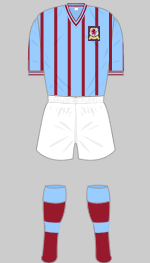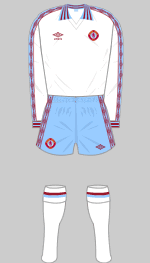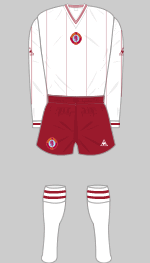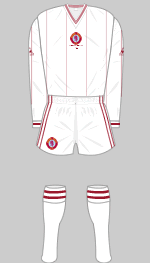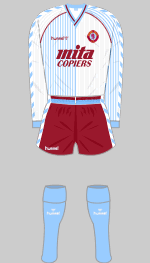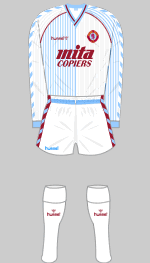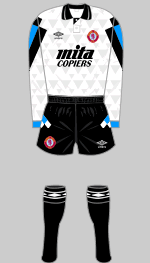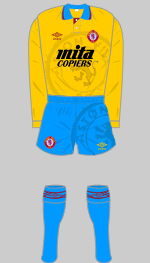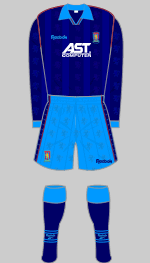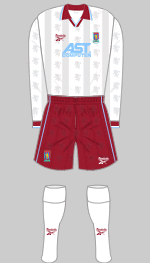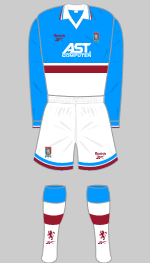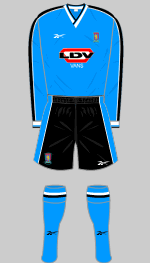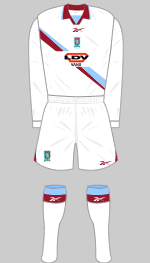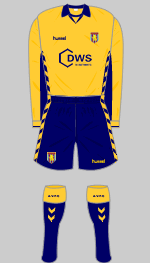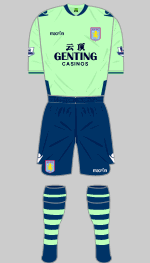Kit History

1874-1877
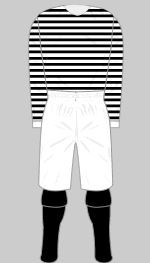
1877-1878

1878-1883
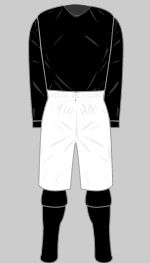
1883-1884

1888-1899
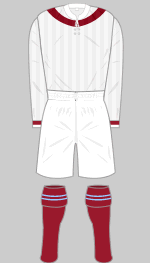
1900-1906
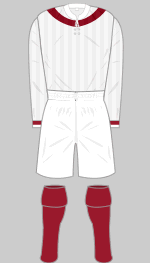
1906-1907
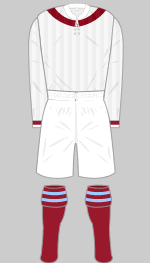
1920-1921
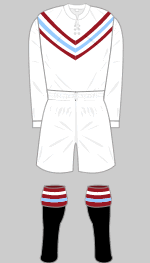
1922-1923
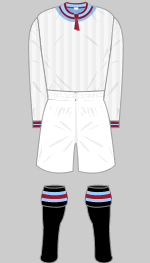
1923-1929
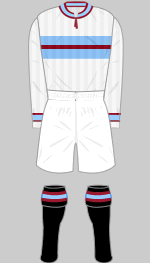
1930-1936
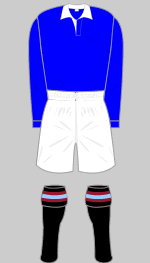
1931 & 1934 3rd
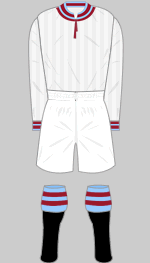
1938-1939
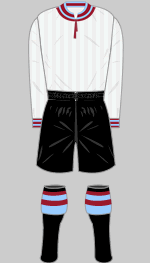
1946-1955
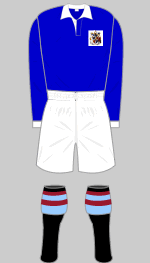
Feb 1953 v Rotherham
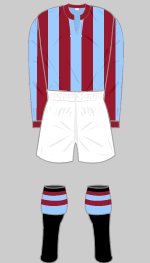
1955-1956
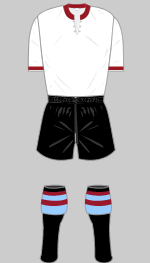
Aug-Dec 1956
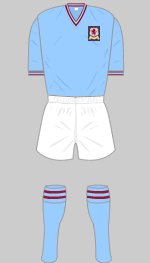
December 1956-1962
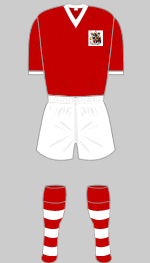
March 57 v Burnley
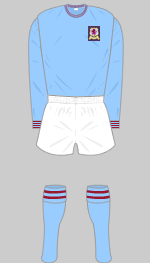
1962-1963

1963-1964

1964-1965
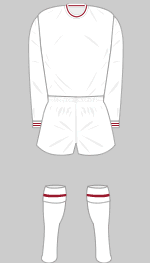
1965-1966
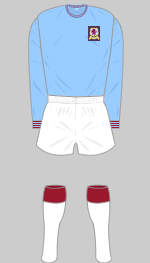
1966-1967 1
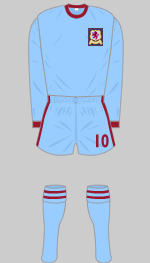
1966-1967 2
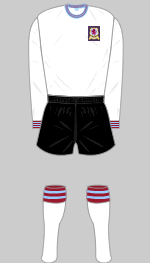
1967-1968
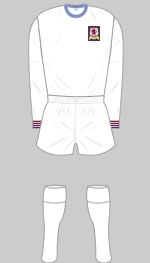
1968-1969
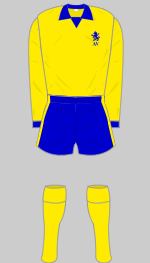
1969-1973
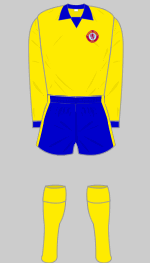
1973-1974
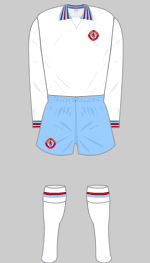
1974-1975
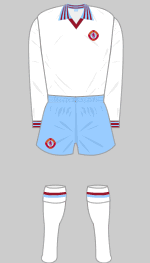
1975-1976
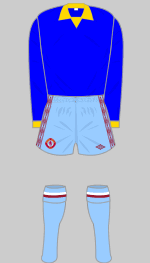
31 Aug 1977
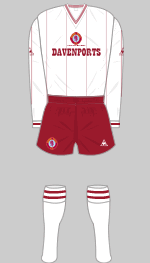
1982-1983
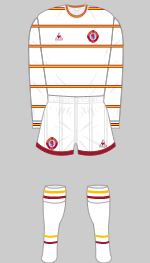
1983-Feb 1984
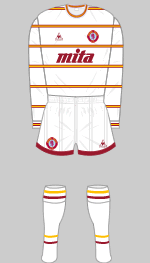
Feb-May 1984
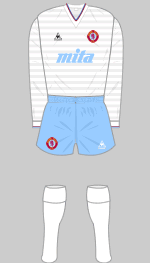
1984-1985
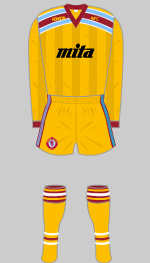
1985-1987
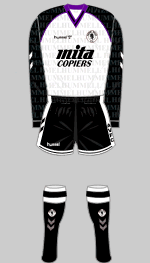
1989-1990
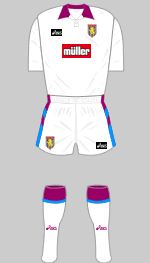
1994-1995
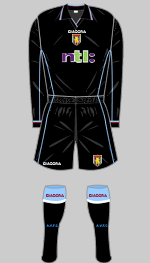
2000-2001
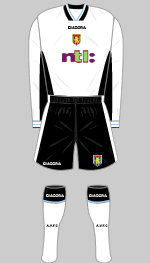
2000-2001 Third
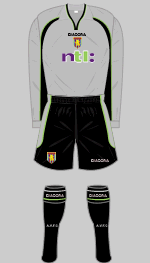
2001-2002

2002-2003
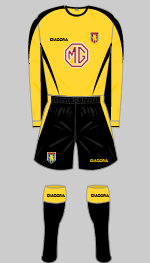
2003-2004
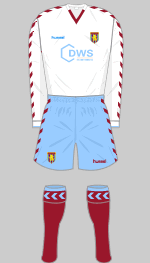
2004-2005
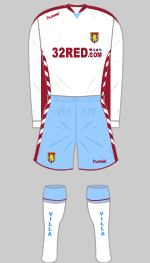
2006-2007
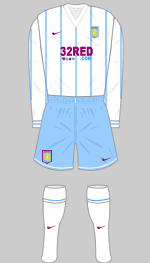
2007-2008
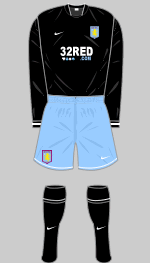
2007-2008 Third
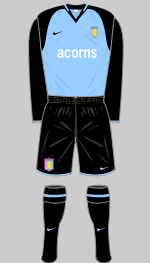
2008-2009

2008-2009 Euro
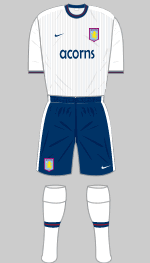
2009-2010
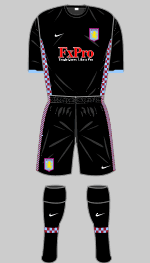
2010-2011

2010-2011 3rd
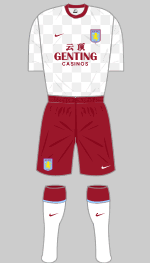
2011-2012 A
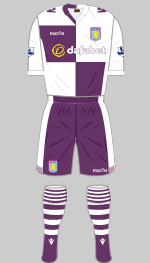
2013-2014 A
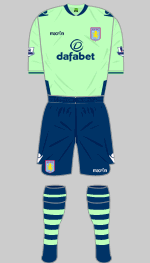
2013-2014 3rd
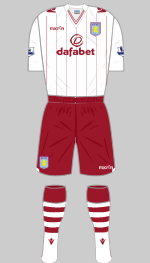
2014-2015 A
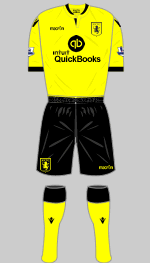
2015-2016 A
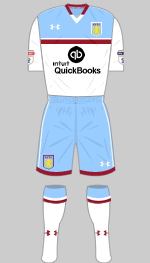
2016-2017 A
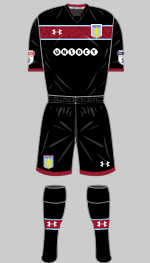
2017-2018 A
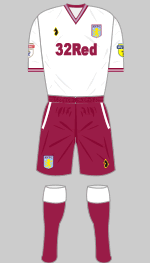
2018-2019 A
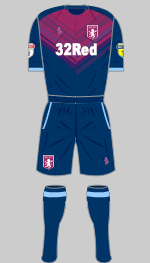
2018-2019 3rd
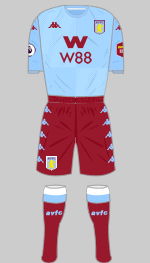
2019-2020 A
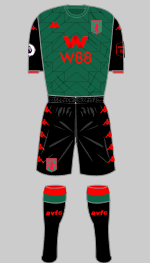
2019-2020 3rd
Background
 In their early years Villa changed their colours frequently, with the old sets being passed on to the 2nd and 3rd XIs so it is possible that when colours clashed the team would play in their older shirts. The first recorded change strip was recorded in the club Minute Book for March 24 1884 as black jerseys. However, John Lerwill cites Charlie Johnstone (who played for the club 1878-1881 and later became a director) describing the team wearing black and white horizontal stripes which I believe was an earlier change kit.
In their early years Villa changed their colours frequently, with the old sets being passed on to the 2nd and 3rd XIs so it is possible that when colours clashed the team would play in their older shirts. The first recorded change strip was recorded in the club Minute Book for March 24 1884 as black jerseys. However, John Lerwill cites Charlie Johnstone (who played for the club 1878-1881 and later became a director) describing the team wearing black and white horizontal stripes which I believe was an earlier change kit.
From 1892 the Football League required home teams to keep a set of white shirts for use in the event of a colour clash. At the turn of the century light blue jerseys were used with a distinctive claret band at the neck, similar to Villa's regular first choice tops of the period.
During the 20s and 30s, Villa's white change shirts were enlivened with claret and blue collars similar to those worn on their first choice tops and even a pair of horizontal bands. Like the first choice jerseys, these were made of ribbed wool with large collars of an unusual design. Originally these were laced at the neck with rather fetching tassles but these were usually discarded and the neckline became stretched out of shape.
Villa continued to wear white until December 1956 but from time to time when playing in the FA Cup they would borrow a set of shirts from Birmingham City (who occasionally turned out in Villa's claret and blue). Under the rules of the FA Cup at the time, both teams were required to change when colours clashed: if their change shirts also clashed one or both teams would borrow a set from another club. Villa played in blue shirts against Rotherham in February 1953 while Birmingham played in claret and blue against Chelsea on the same day. The last time that Villa borrowed a set of City's strips was in the Sixth Round against Burnley in 1957 when they wore Birmingham's red and white change strip in the replay.
In December 1956 a new sky blue shirt was introduced. This was the first season that the club badge was worn on the shirts and culminated in an FA Cup win in 1957 when the team wore a dramatic pin striped shirt - apparently to provide sufficient contrast for TV coverage. Sky blue shirts were worn when required until 1967 when white was restored.
In 1969 Tommy Docherty introduced the first flappy collars when setting about modernising the club's image. He also introduced a yellow and blue change kit, which lasted until 1975 when once again white shirts returned. White remained the alternative choice, with various trimmings, until a little known manufacturer, Henson, broke the mould in 1985 with a bold amber design featuring claret and blue horizontal bands on the upper chest, mirroring the home shirt.
Hummel took over in 1985, introducing first a blue and white version of their iconic halved shirt followed by a white shirt with black sleeves and violet trimmings. As the 90s wore on Villa's change kits became more radical and one of the most controversial was the green, black and red striped effort from 1993-95.
Diadora introduced an even more radical design in 2001 with a silver-grey shirt trimmed with fluorescent green piping matched with dark navy shorts. This was typical of the designs of the period that were created with an eye for the leisure wear market rather than what would be distinctive on the pitch.
White shirts combined with sky blue shorts have appeared regularly in the new millenium.






